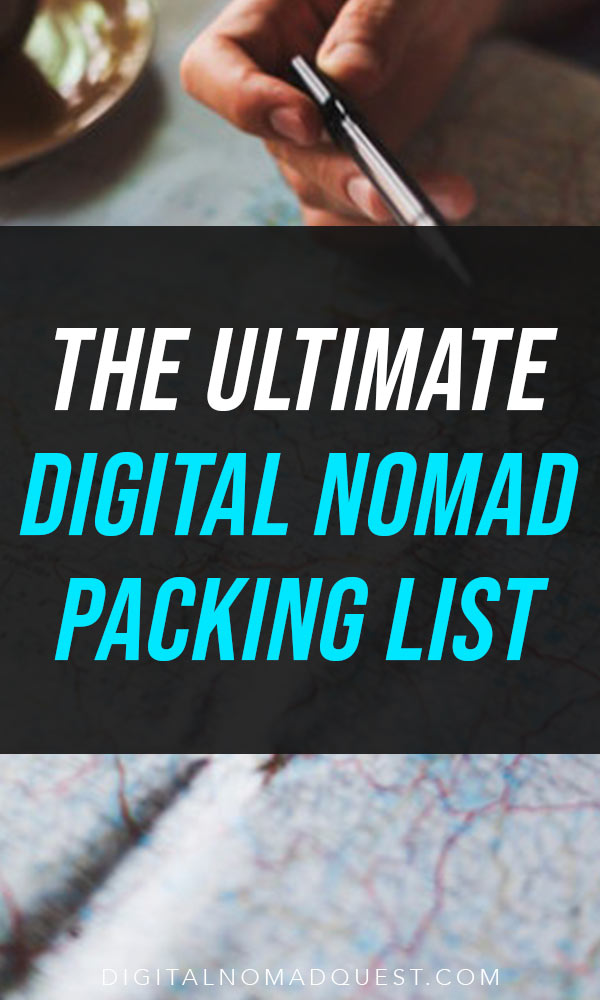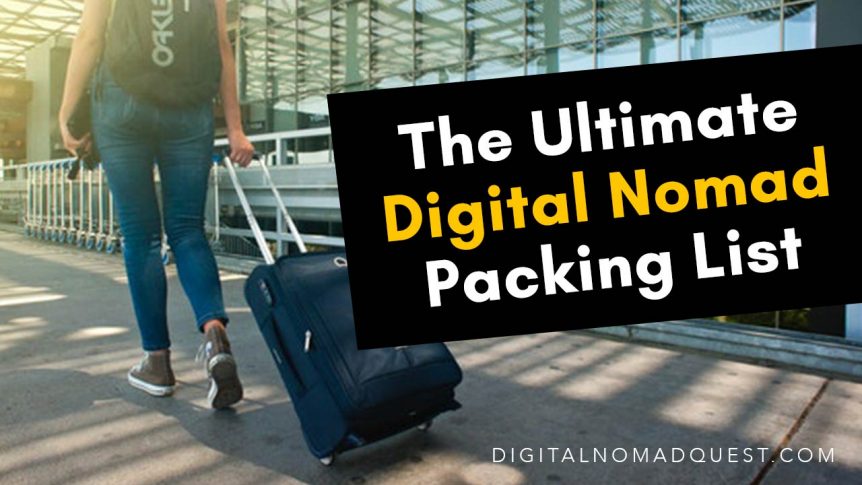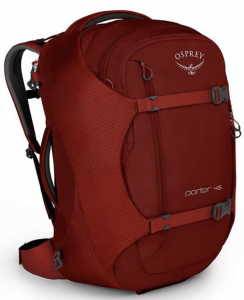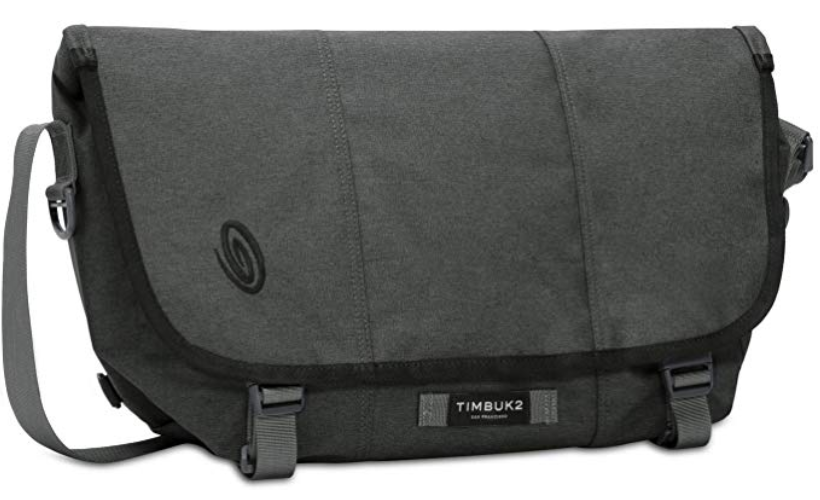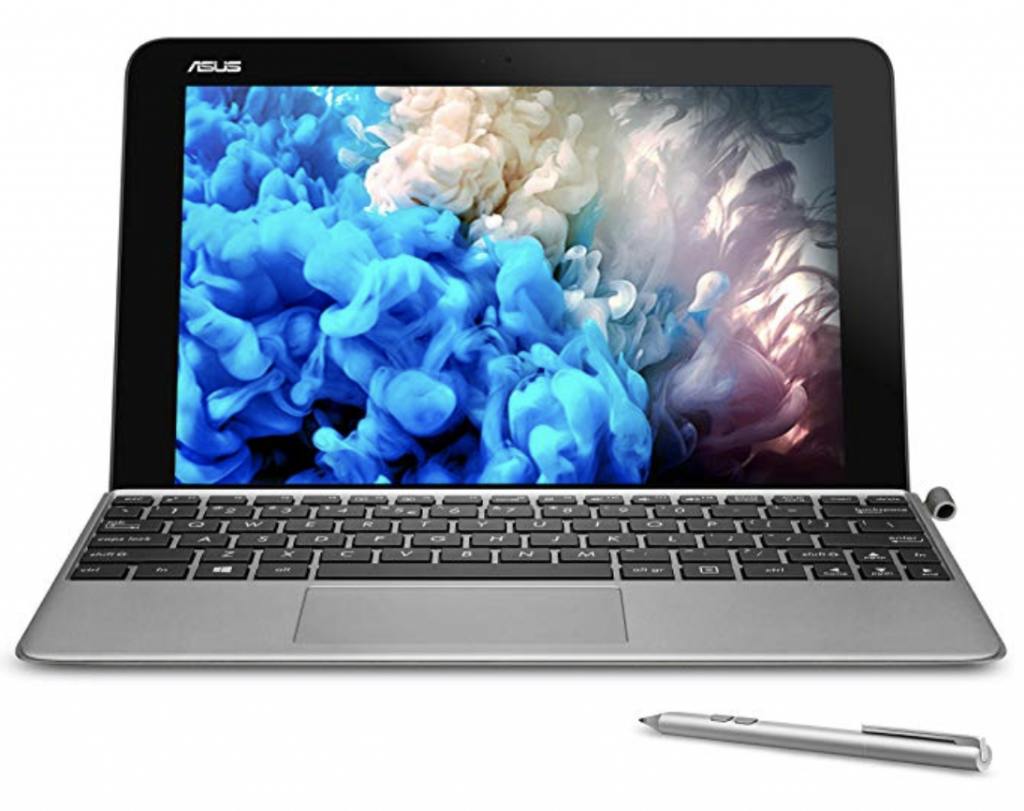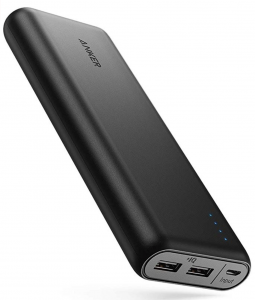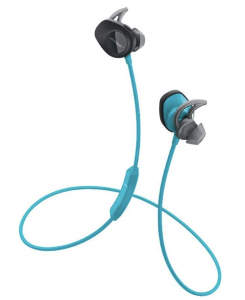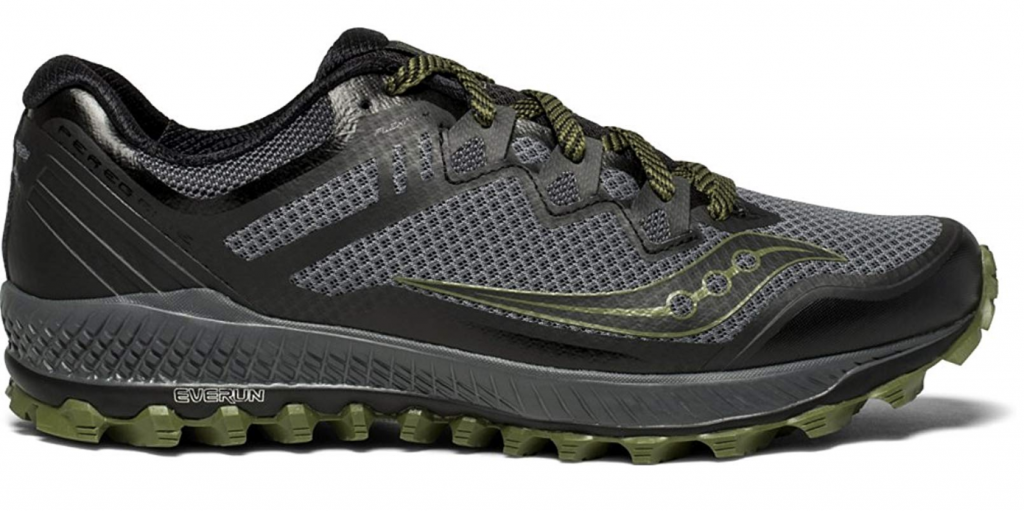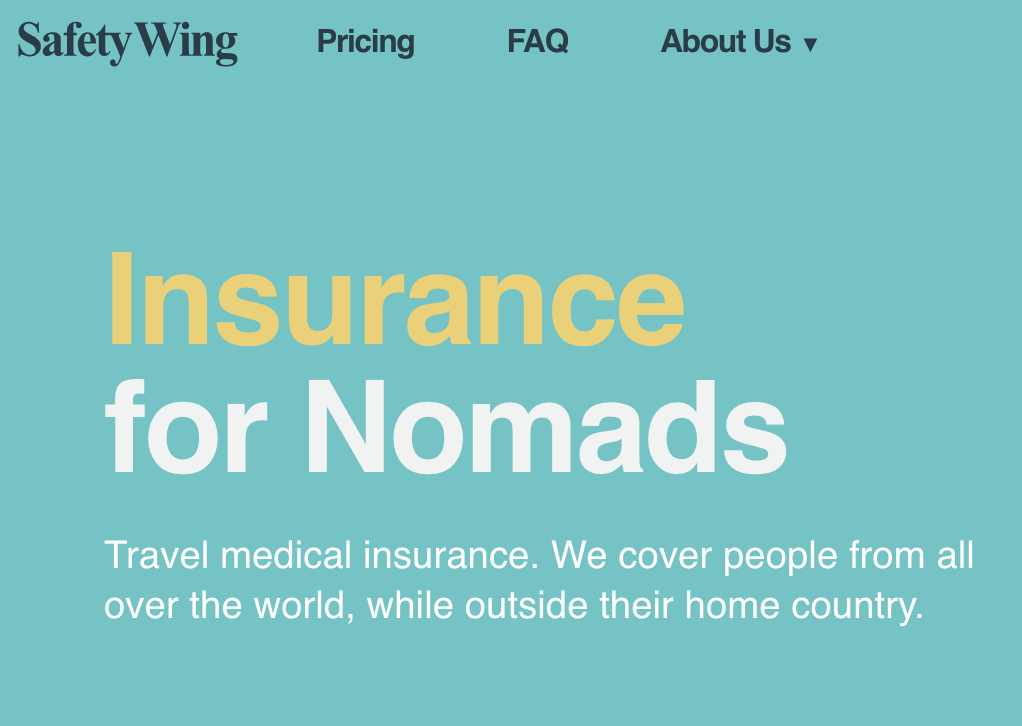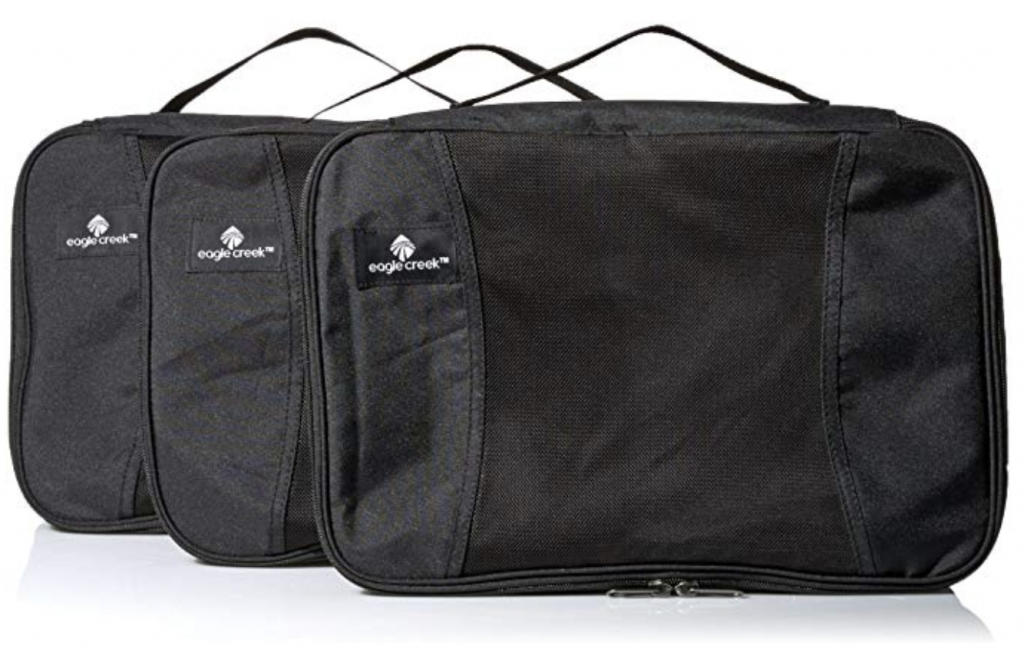Post written by Digital Nomad Quest writer Amy McKee.
You’ve taken the leap into becoming a digital nomad and living a location-independent lifestyle. What should you have on your digital nomad packing list in order to make your journey successful? Let’s assume that you are going to use only carry-on luggage. Sure, you can take an entire suitcase, and many digital nomads do, but many people regret over-packing. Your goal is to be flexible and mobile, without sacrificing what you need to work on the road! That’s why we’ve created the ultimate digital nomad packing list with portable and efficient solutions for your nomading needs.
This list is broken down into five main categories: Bags, Technology, Clothes & Shoes, Documents, and Small Stuff.
The Ultimate Digital Nomad Packing List
Which Bags Should You Use?
Main Carry-On Bag – I’ve owned two Osprey bags, and both have served me well. Osprey makes bags for both men and women that can be adjusted by height, which is critical for walking long distances without getting a backache.
My first bag was a 70 liter Osprey Farpoint. This is an amazing bag, but I ultimately sold it and bought a 46 liter Osprey Porter since I occasionally had to check the larger backpack on smaller airplanes. Since then, my Osprey Porter has been all over the world, on nearly 100 flights on five continents! It qualifies as carry-on luggage on most flights around the world, as long as it doesn’t weigh too much. It has a separate compartment with a padded laptop sleeve that can be locked. I would recommend either one of these bags depending on how much room you need.
Day Pack – This can be anything as long as it’s comfortable, secure, and doesn’t take up too much space! I use a cheap knock-off backpack that I bought at a market while traveling. It fits my laptop when I’m forced to check my big backpack, and it works well for hiking.
Purse – If you’d rather use a purse, the Timbuk2 Classic Messenger Bag in size X-small is a great option. It closes securely, and it fits a book, a water bottle, and most smaller tablets.
Technology
As a digital nomad, you might not want the most cutting-edge technology. Unless you have specific technology needs for your job, your focus should be on devices and accessories that are light, durable, and not too flashy. Having a bright neon orange cell phone cover isn’t ideal when traveling. You might be making yourself a target for theft.
Laptop – Choosing the right laptop totally depends on what you want to do with it. If you work in a more technical field, you probably don’t need my recommendations. What if you just want to blog and edit a few images along the way? When I last traveled for a full year, I had an ASUS Transformer. It had just enough power to run a browser with WordPress, Microsoft Office, and free basic image editing software. Chromebooks are also a good value if Google’s free applications meet your needs.
Power Bank – I like Anker PowerCore. This will become your best friend on the road!
Earbuds – Wireless is a great option, but remember that most airlines use old fashioned headphone jacks. I love my Bose SoundSport wireless earbuds, but I always keep a set of JBuds in my bag too.
Travel Outlet Converter – I like to bring a single convertible outlet converter like this one.
Cell Phone with Travel-Friendly Plan – There are two approaches to this. You can either bring an unlocked phone that takes SIM cards wherever you go, or bring your own cell phone and use an international plan. I currently use GoogleFi to connect to international networks and WiFi networks as I travel.
Charging Cables – You definitely want spares!
Hard Drive – I keep everything on Dropbox, but it’s always good to have a backup when working with irreplaceable files. A WD Elements Portable External Hard Drive can be password protected for extra security.
Flash Drive – I rarely use this when at home, but I always find a use while traveling! This comes in handy if I need to go to a small shop to print or scan something. A SanDisk Cruzer is perfect for me.
Headset – This is essential for anyone who teaches online or does conference calls! I use an inexpensive Logitech headset with a cord when I teach online, but there are several good Bluetooth options.
Wireless Mouse – Do you really want to be working all day hunched over a trackpad mouse? Your back, wrist, and shoulder will thank you for this inexpensive purchase. I purchased mine at Costco, similar to this one by Logitech.
Clothes & Shoes
Packing light is important, but you need to be strategic. During my first long-term trip I found that I tried too hard to pack light, and I started to feel a bit grubby after a few months. You don’t want to look like a backpacker if you need to go to a nicer restaurant, or network at a coworking space, or even go on a date. That said, you also don’t want to wear inappropriate shoes to hike a waterfall. I’ve found that I need three pairs of shoes when I travel: Athletic shoes, black leather flats with good support, and a pair of flip flops. Your needs may vary depending on where you go.
Athletic Shoes – I am a big fan of trail runners. Trail runners are designed like running shoes, but with extra support and treads on the bottom like hiking shoes. My favorite trail runner is the Saucony Peregrine. These shoes are light enough to run in, and small enough to fit into your carry-on bag, but will also give you enough traction for hiking in light mud. These won’t quite cut it for Patagonia or Iceland since they don’t have ankle support, but I have found them to be perfect for 90% of my trips. If you are on a budget, look for last year’s model on sale.
Leather Shoes with Good Support – For women, this means leather (or faux leather) flats with good arch support. For men, this might mean an Oxford style. Over the years I have had pairs by Clark’s and Ecco. I can walk all day around a city in these shoes, wear them to an office, on a date, or to a nicer venue. Although the United States can be very casual, some countries have dress codes for certain locations.
Flip-Flops – The all-purpose flip-flop. Used for the beach, shower shoes, house slippers… the list goes on.
Clothing – This is one of the most difficult questions when packing light. If you are staying in one geographic region or climate, this will be an easier task. A few years ago I was on a six month trip that included tropical beaches and hiking in the Andes. My strategy was to buy a few items as needed, and leave extras behind. Hostels often have clothing, book, and gear swap areas for people to do just that!
My recommendation: Don’t go crazy with “travel specific” gear that costs a lot until you know what you really need in a given location. I typically bring a lot of underwear and socks, and limit my other items that can be worn multiple times between washing.
Accessories, Watches, Makeup, Jewelry – You may not need these as a backpacker, but as a digital nomad you might want to look a bit more polished sometimes. Pack these items sparingly, both because of space and because of theft risk. Maybe a tie, an inexpensive watch, or a lipstick. These items take up much less space than additional clothing, so they can give you the flexibility expand your limited wardrobe.
Documents
Passport – Make sure you have six months left before expiration. I always have a few color copies of my passport as well, so that I don’t have to bring my real passport everywhere.
Visas – Many countries issue visas on arrival or e-Visas. Make sure you have this figured out before you leave for your trip!
Proof of Vaccination – Many countries require you to have a Yellow Fever Vaccination Card. I was denied boarding once when I forgot mine. The airlines did not accept a digital scan. That was a painful lesson!
Cards – I generally bring a Visa, a Mastercard, and an ATM card with no international fees. There are literally hundreds of blogs and websites discussing the pros and cons of credit card rewards. I started my digital nomad journey with a Chase Sapphire Preferred Visa, in part because the points transferred to the airlines that I wanted to use on my first long-term trip. I also carry a Mastercard in case the merchant doesn’t take Visa, or in case of theft.
Set up a checking account with Charles Schwab for your ATM. Many digital nomads use this because there are no foreign ATM fees, and general ATM fees are always reimbursed. I also prefer to use a secondary ATM card that is not linked to my accounts in the US as another form of protection. I only transfer a few hundred dollars into the account at a time in case of theft.
Money – I get the best exchange rates by withdrawing directly from foreign ATMs. That said, I always have a stash of about $100 USD in small bills in case of emergencies. This has saved me many times, like when I landed in Panama City and every single ATM in the airport was down. I was still able to hire a taxi! Keep in mind that you can’t always use a credit card or use a phone app while traveling.
Proof of Onward Travel – Many airlines want to see a return airline ticket before they will allow you to board. Sometimes I don’t have that, so I book a ticket on Expedia.com and cancel it within 24 hours of booking.
Health Insurance – Travel insurance or health insurance is a good idea, especially if you plan to do adventure sports. World Nomads and SafetyWing are both great options, or you can go with a full service international health insurance plan.
Small Stuff
TSA Combination Locks – You will lose at least one, so make sure to have a spare! I always travel with three or four locks. I also carry a locking cable for situations when I need to secure my bag even more.
Ear Plugs, Eye Mask, Neck Pillow – Sleeping isn’t always easy on a plane or in a hostel. Make sure you are comfortable! I use Hearos for earplugs, since I lose them so often. I’m not picky about eye masks, but I am picky about neck pillows. I prefer an inflatable model with a bit of neck support that doesn’t take up space.
Water Bottle – More and more places are banning single-use plastics. Bring your own bottle!
Medication – If there’s an essential medication that you can’t live without, make sure to bring it. It’s also a good idea to keep a copy of the prescription with you if you are bringing larger quantities.
Packing Cubes – Your luggage will get crazy after just a few days. Packing cubes are great to separate clean and dirty laundry, and they also help you use your space more efficiently.
Luggage Tags – You want tags that are durable, easy to read, and easy to identify. These tags from Flight 001 come in a variety of colors.
Cosmetics/Toiletries – We’ve all been programmed to put everything in 100 ml travel bottles for shorter trips. If you are going on a longer trip and planning to stay in AirBnBs for weeks at a time, purchase local shampoos and soaps along the way. I only bring the specific products that I can’t live without in travel sizes in my clear plastic baggie. For shorter trips, I love these small travel jars from Sephora. Also, keep in mind that your nail scissors will be confiscated by airport security at some point.
Conclusion
The more you travel as a digital nomad, the better you will find out what works for you! I’ve developed my own list over several years of trial and error, but I always expect surprises. You will meet plenty of other digital nomads in hostels and co-working spaces who have great recommendations or horror stories about their gear.
Hope you enjoyed our version of the ultimate digital nomad packing list. Do you have any must-have gear on your digital nomad packing list? Let us know in the comments!
Disclaimer: Please note that affiliate links may be used, which means that if you purchase through the links I do earn commissions at no extra cost to you. These commissions will support the continued operation of the website!
